Find Help
More Items From Ergsy search
-

Coronary Bypass Grafting (CABG)
Relevance: 100%
-

Intro to Angiograms, Angioplasty & Coronary Bypass Grafting
Relevance: 78%
-

Will a heart bypass make me live longer?
Relevance: 47%
-
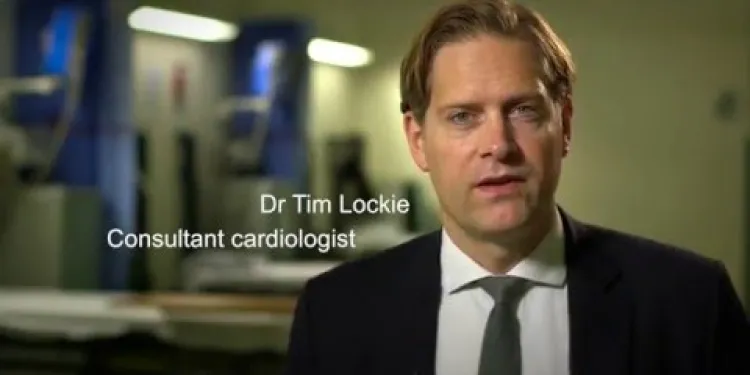
Introduction to coronary angiogram and stenting
Relevance: 24%
-

FFR-CT beat invasive conventional coronary angiography says a Cardiologist
Relevance: 21%
-

What is angina and how is it treated?
Relevance: 13%
-

Heart stents
Relevance: 12%
-

What number of grafts do I need for my hair transplant in Turkey?
Relevance: 10%
-

Cardiac Physiology Walkthrough
Relevance: 8%
-

What is the cost of a hair transplant in Turkey?
Relevance: 8%
-

What causes heart failure?
Relevance: 8%
-

Heart Failure : When the heart becomes stiff?
Relevance: 8%
-

Heart Failure : Heart failure that cannot pump
Relevance: 8%
-
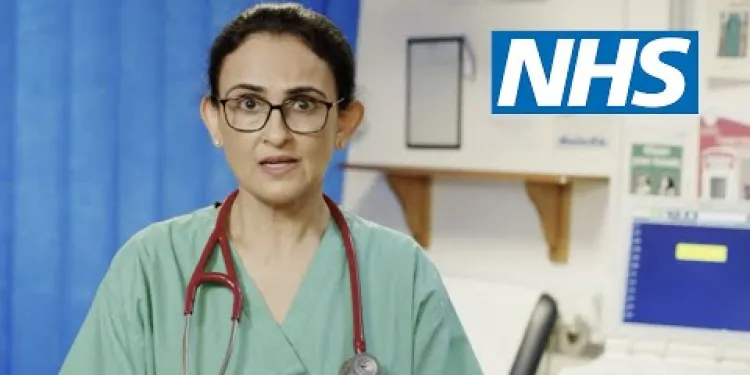
Heart Attack Stories | NHS
Relevance: 7%
-

Heart failure introduction
Relevance: 6%
-

How long should I stay in Turkey for my hair transplant?
Relevance: 6%
-

Weight Loss Surgery
Relevance: 5%
-

Before Angioplasty
Relevance: 5%
-

Why might someone need a stoma bag?
Relevance: 5%
-

Heart Failure : Symptoms of heart failure
Relevance: 5%
-
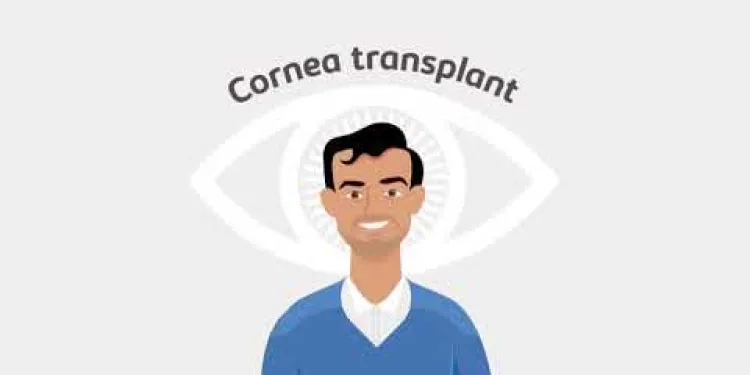
Cornea transplant - Your journey
Relevance: 5%
-

Heart Failure : What is heart failure?
Relevance: 5%
-

How long does it take for CBD to work?
Relevance: 5%
-
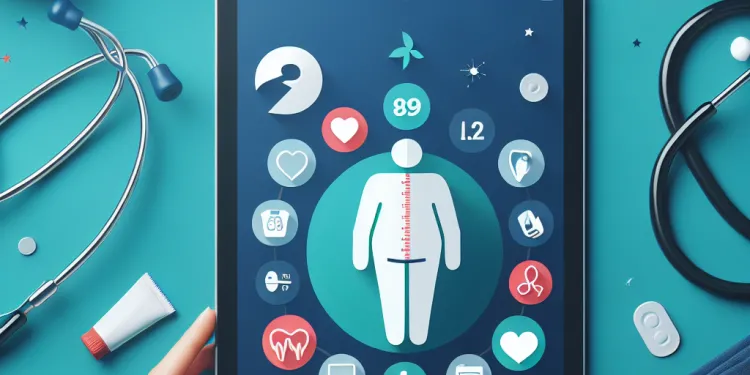
What treatments are available for obesity?
Relevance: 5%
-
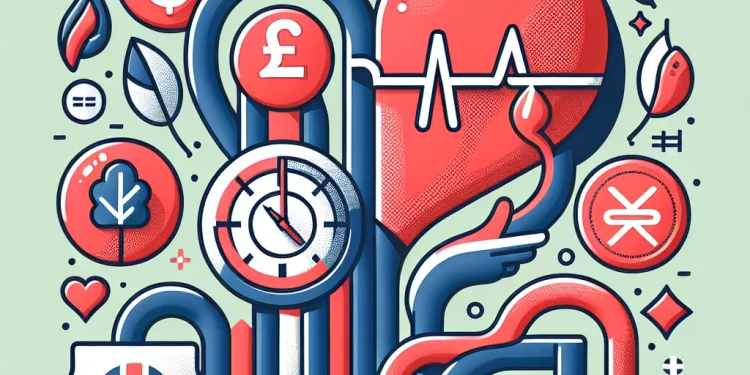
What are the symptoms of arterial thrombosis?
Relevance: 5%
-

What signs indicate that my email filters may have been tampered with?
Relevance: 5%
-

What exactly is an arrhythmia?
Relevance: 5%
-

Hair Transplants in Turkey
Relevance: 5%
-

Heart Failure : The normal heart
Relevance: 5%
-
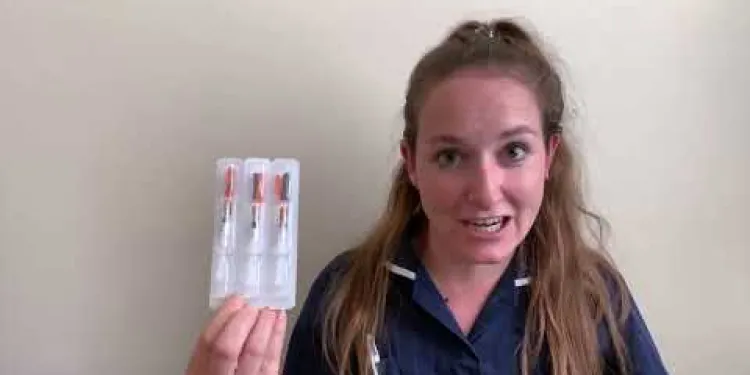
Bariatric Surgery - What to expect when you come to hospital for your operation.
Relevance: 4%
-

Are hair transplants in Turkey safe?
Relevance: 4%
-

How does motor neurone disease impact swallowing?
Relevance: 4%
-

How is heart failure diagnosed?
Relevance: 4%
-

What is a Stoma Bag?
Relevance: 4%
-

Do fake weight loss drugs offer unrealistic results?
Relevance: 4%
-
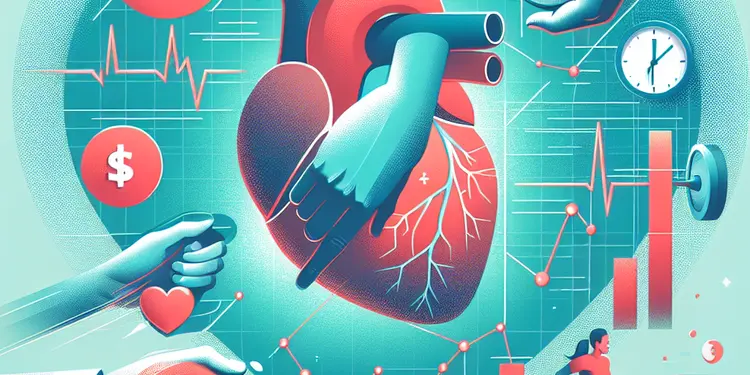
Can physical exertion trigger a heart attack?
Relevance: 4%
-

Could this social media ban lead to an increase in workarounds by under 16s?
Relevance: 4%
-

What is the prognosis for someone with heart failure?
Relevance: 4%
-

Can heart failure be prevented?
Relevance: 4%
-

Eddie's Story - Abdominal Aortic Aneurysm (AAA) Screening
Relevance: 4%
Coronary Bypass Grafting (CABG): What You Need to Know
Introduction to Coronary Bypass Grafting
Coronary Bypass Grafting (CABG) is a surgical procedure designed to improve blood flow to the heart. It is commonly performed on patients with significant coronary artery disease (CAD), where the arteries supplying blood to the heart muscle are narrowed or blocked. In the United Kingdom, CABG is a widely practiced and well-established treatment, helping to reduce symptoms and improve the quality of life for many individuals with severe heart conditions.
How CABG Works
During a CABG procedure, a surgeon takes a healthy blood vessel from another part of the patient's body, such as the leg, arm, or chest, and uses it to bypass the blocked or narrowed coronary arteries. This new pathway allows blood to flow more freely to the heart muscle. Depending on the severity and extent of the artery blockages, a patient may need one, two, three, or more bypasses, referred to as single, double, triple, or quadruple bypasses.
Candidates for CABG
Patients who are considered candidates for CABG typically have severe coronary artery disease with symptoms such as chest pain (angina), shortness of breath, and fatigue. These symptoms can significantly hinder daily activities. CABG is particularly indicated when lifestyle changes, medications, and less invasive procedures like angioplasty have not effectively managed the condition. Additionally, individuals who are at high risk for heart attack or have already experienced one may also benefit from this surgery.
The CABG Procedure
The CABG procedure generally takes several hours and is performed under general anaesthesia. During the surgery, the patient's heart may be temporarily stopped, and a heart-lung machine will take over the circulation of blood and oxygen. Alternatively, a "beating-heart" technique may be used where the heart continues to beat during the surgery. After the grafts are in place, the surgeon will restart the heart and ensure it is functioning correctly before closing the chest incision.
Recovery and Aftercare
Recovery from CABG surgery involves a stay in the hospital for monitoring and initial rehabilitation. Most patients spend about a week in the hospital, including time in a critical care unit. Full recovery can take several weeks to a few months, during which patients will gradually return to normal activities under the guidance of their medical team. Cardiac rehabilitation, a program of exercise and education, is often recommended to support recovery and improve long-term heart health.
Conclusion
Coronary Bypass Grafting (CABG) is a significant, life-saving procedure for many people in the United Kingdom suffering from severe coronary artery disease. With advances in surgical techniques and postoperative care, the outcomes of CABG have improved significantly, offering better symptom relief and a greater quality of life for patients.
Coronary Bypass Grafting (CABG): What You Need to Know
Introduction to Coronary Bypass Grafting
Coronary Bypass Grafting, called CABG, is an operation to help your heart get more blood. This is done for people with heart problems when the arteries, which are the tubes carrying blood to the heart, are too narrow or blocked. In the UK, many people get this operation to feel better and have a healthier life.
How CABG Works
In CABG, a doctor will take a healthy blood vessel from your leg, arm, or chest. This vessel is used to go around the blocked artery so the blood can reach the heart easily. Depending on how many arteries are blocked, a person might need one, two, three, or even four bypasses. These are called single, double, triple, or quadruple bypasses.
Who Gets CABG?
People who might need CABG have bad heart issues. Symptoms include chest pain, trouble breathing, and feeling very tired. If changing your lifestyle, taking medicine, or other treatments don't help, CABG might be needed. People at high risk of heart attacks, or those who have already had one, might also have this surgery.
The CABG Procedure
CABG surgery takes a few hours. You'll be under general anesthesia, which means you'll be asleep and won't feel anything. Sometimes the heart is stopped during the surgery, and a machine does the heart's job. Other times, the heart keeps beating. After the operation, the doctor checks if the heart works well before closing up the chest.
Recovery and Aftercare
After CABG surgery, you stay in the hospital for monitoring and to start getting better. Most people stay for about a week. Full recovery can take some weeks or months, and you'll slowly get back to your usual activities with help from your doctor. You'll likely join a cardiac rehab program. This program has exercises and information to help you recover and keep your heart healthy.
Conclusion
Coronary Bypass Grafting is a big operation that can save lives for people with severe heart problems in the UK. Thanks to new techniques, CABG now helps many people feel better and enjoy life more.
Frequently Asked Questions
What is Coronary Artery Bypass Grafting (CABG)?
Coronary Artery Bypass Grafting (CABG) is a surgical procedure to improve blood flow to the heart. It involves taking a healthy blood vessel from another part of the body and grafting it to bypass a blocked or narrowed coronary artery.
Why is CABG performed?
CABG is performed to relieve symptoms of coronary artery disease, such as chest pain and shortness of breath, improve quality of life, and reduce the risk of heart attack.
Who needs CABG?
CABG is typically recommended for patients with severe coronary artery disease, multiple blockages, or those who have not responded well to other treatments like medication or angioplasty.
How long does the CABG surgery take?
The duration of CABG surgery can vary, but it generally takes between 3 to 6 hours depending on the number of arteries that need to be bypassed and the complexity of the case.
What is the recovery time after CABG?
Recovery from CABG can take several weeks to a few months. Patients typically spend about 5 to 7 days in the hospital and gradually regain normal activities over the following weeks.
What are the risks associated with CABG surgery?
Like any major surgery, CABG carries risks such as bleeding, infection, heart attack, stroke, and problems related to anaesthesia. However, it is considered a relatively safe and effective procedure.
How should one prepare for CABG surgery?
Preparation for CABG surgery may include tests like blood tests, chest X-rays, and ECGs. Patients are advised to stop smoking, follow any eating or drinking restrictions, and discuss medications with their healthcare provider.
What type of anaesthesia is used during CABG?
CABG is performed under general anaesthesia, meaning the patient will be unconscious and not feel any pain during the surgery.
Can lifestyle changes improve CABG outcomes?
Yes, adopting a healthy lifestyle can improve outcomes after CABG. This includes quitting smoking, eating a balanced diet, exercising regularly, and following any prescribed medication routines.
What is the success rate of CABG?
The success rate of CABG is generally high, with most patients experiencing significant relief from symptoms and a reduced risk of heart attack. Long-term outcomes depend on various factors, including overall health and lifestyle changes.
Is CABG a permanent cure for coronary artery disease?
While CABG can significantly alleviate symptoms and improve quality of life, it is not a cure for coronary artery disease. Patients need to continue managing their condition with lifestyle changes and medications.
What should one expect during the hospital stay for CABG?
During the hospital stay, patients will be closely monitored in the intensive care unit (ICU) initially and then in a regular ward. They will receive medications to manage pain, prevent blood clots, and control heart function.
When can one return to normal activities after CABG?
Most patients can return to normal activities, including work, within 6 to 12 weeks after surgery, depending on their recovery progress and doctor's advice.
Can one drive after CABG surgery?
Patients are usually advised not to drive for at least 4 to 6 weeks after CABG surgery. Always follow your doctor's guidance on when it is safe to resume driving.
What is the long-term outlook for someone who has had CABG?
The long-term outlook for someone who has had CABG is generally positive, especially if they adhere to a heart-healthy lifestyle. Regular follow-up with a healthcare provider is important to monitor heart health and manage any ongoing risks.
What is Coronary Artery Bypass Grafting (CABG)?
Coronary Artery Bypass Grafting, also known as CABG, is a kind of heart surgery.
Doctors do this to help the heart get more blood.
If someone has narrow or blocked heart arteries, they might need this surgery.
An easy way to understand it is to think of it as making a new road for the blood to travel.
Doctors use a healthy blood vessel from another part of the body to make this new path.
To learn more, you can watch videos or ask the doctor to explain with pictures.
Coronary Artery Bypass Grafting (CABG) is a kind of heart surgery. It helps the heart get more blood. To do this, doctors take a healthy blood vessel from a different part of your body. Then, they connect it to go around a blocked or narrow heart artery.
Why do doctors do CABG?
Doctors do a surgery called CABG to help the heart. It helps when blood has trouble getting to the heart. Think of it like a new road for blood to travel. This can help you feel better and have more energy.
If reading is tough, you can ask someone to read with you. Or you can use software that reads the words out loud to you. Always take your time and ask questions if you don’t understand.
CABG is a surgery to help with heart problems. It can make chest pain and hard breathing better. It helps you feel better and keeps your heart safe from getting hurt.
Who needs heart bypass surgery?
Some people have blocked heart tubes, called arteries. This can make it hard for the heart to work well. Heart bypass surgery helps blood go around the blocked parts.
Doctors decide if someone needs the surgery. They might look at tests like pictures of the heart.
If you find it hard to understand, using pictures or asking someone to explain can help. You can also ask doctors to explain in simple words.
CABG is a surgery for people with bad heart problems. It helps if they have many blocked heart arteries or if other treatments like medicine or a small tube (angioplasty) did not work.
How long is the CABG surgery?
The CABG surgery is a heart operation. It can take about 3 to 6 hours. This depends on each person.
To help understand better, you might use:
- Pictures or diagrams of the heart.
- A calendar to count hours.
- Talking with a doctor or nurse about the surgery.
The heart bypass surgery usually takes about 3 to 6 hours. It depends on how many arteries need fixing and how tricky the surgery is.
How long does it take to get better after heart surgery (CABG)?
After heart surgery, most people start feeling better in:
- 1 to 2 months for small things like walking and eating.
- 3 to 4 months for bigger things like running or playing sports.
Everyone is different, so some people might take more time. Here are some things that can help:
- Take it easy and rest a lot.
- Eat healthy food.
- Go for short walks.
- Ask your doctor for more advice.
If you need help, a family member or friend can help you remember to rest and eat well.
Getting better after heart surgery might take a few weeks to a few months. People usually stay in the hospital for about 5 to 7 days. After that, they slowly go back to doing their normal activities over the next few weeks.
What are the dangers of heart surgery?
Heart surgery can be risky. Here are some things that might happen:
- You might feel pain or hurt.
- There could be bleeding.
- You might get an infection.
- It can be hard to breathe.
- Your heart might have trouble working.
- Sometimes, people have a stroke.
It's important to talk with your doctor about these dangers. You can ask someone you trust to help you understand. Writing down your questions can be useful. Using pictures or drawing can also make things clearer.
All big surgeries can be risky. When doctors do a heart surgery called CABG, there can be problems like bleeding, infection, heart attack, or stroke. The medicine that makes you sleep during the surgery can also cause problems. But, many doctors think this surgery is safe and works well.
How can you get ready for CABG surgery?
CABG surgery is a big heart operation. Here are some simple steps to help you get ready:
1. Talk to Your Doctor: Ask your doctor questions. They can tell you what to expect and how to prepare.
2. Take Your Medicine: Some medicines can help you before the operation. Your doctor will tell you which ones to take.
3. Eat Healthy Food: Eating good food can make you stronger. Try to eat fruits, vegetables, and proteins like chicken or fish.
4. Stop Smoking: Smoking is bad for your heart. It is important to stop smoking before the surgery.
5. Get Help: Ask a friend or family member to help you. They can give you support before and after the surgery.
6. Relax: Try to stay calm. Listening to music or doing puzzles can help you feel better.
If you need help understanding, ask someone you trust to explain it to you. Using pictures or writing a list can also help you remember what to do.
Getting ready for heart surgery (CABG) might include some tests. These tests can be blood tests, chest pictures (X-rays), and heart checks (ECGs). Your doctor will tell you to stop smoking. They might also tell you not to eat or drink before the surgery. Make sure to talk to your doctor about any medicines you take.
What kind of medicine is used to make you sleep during heart surgery?
CABG is a type of heart operation. When you have this surgery, doctors give you special medicine so you go to sleep and can't feel anything. You won't feel any pain during the operation.
Can changing how you live help after heart surgery?
Yes, living in a healthy way can help you feel better after heart surgery called CABG. This means stopping smoking, eating good foods, doing exercises often, and taking your medicine like the doctor says.
How often does heart bypass surgery work?
CABG surgery usually works well. Most people feel a lot better and have less chance of a heart attack after. How you do later depends on your health and if you make healthy life changes.
Does CABG fix heart disease forever?
CABG is a big heart surgery. It helps blood move around blocked parts in the heart. But, it does not fix heart disease forever. You still need to eat healthy food, exercise, and take medicine. Remember to see your doctor for check-ups.
If you have trouble understanding, ask someone for help. You can also use tools that read text out loud. They can make it easier to understand.
CABG can help you feel better and live a happier life. But it doesn't fix heart disease forever. You still need to take care of your heart with healthy habits and medicine.
What happens when you stay in the hospital for heart surgery?
When you have heart surgery, you will stay in the hospital. Here is what you can expect:
- You will get special care from doctors and nurses.
- You may have some tubes connected to your body. These help you breathe and get better.
- Doctors will give you medicine so you don’t feel pain.
- You might feel a bit scared or nervous, and that is okay. Tell a nurse if you feel this way.
It is important to rest and follow what nurses and doctors say to help you get well soon.
Do not forget, it’s okay to ask questions if you do not understand something. You can use things like pictures, videos, or ask someone to explain it in a way you understand.
In the hospital, nurses and doctors will watch over the patients very carefully. Patients will start in the Intensive Care Unit (ICU) and later move to a regular room. They will get medicine to help with pain, stop blood clots, and keep their heart healthy.
To make reading easier, you can use a finger or a ruler to follow along. Take breaks if you feel tired.
When can you go back to your normal activities after heart surgery?
After you have heart surgery (like a CABG), you might wonder when you can do your usual things again. Here's some simple advice:
- **Ask your doctor:** Your doctor can tell you when you are ready. Everyone gets better at their own speed.
- **Take it slow:** Start with easy activities and slowly do more as you feel better.
- **Use help:** It's okay to ask family or friends for help. Use things like a calendar to plan your days and rest when needed.
- **Listen to your body:** If you feel tired or pain, take a break. It's important to give yourself enough time to heal.
Most people can go back to doing their everyday things, like going to work, 6 to 12 weeks after their operation. This depends on how well they are getting better and what the doctor says.
Can you drive after heart surgery?
If you had heart surgery, you might need to wait before you can drive again. It's important to ask your doctor when it's safe to drive.
Some people feel okay after a few weeks. Others need more time.
You can use a simple calendar to mark the day your doctor says you can drive again.
Ask someone to help remind you about this. They can use a phone reminder or write it on paper.
After heart surgery, doctors usually say don't drive for 4 to 6 weeks. Listen to your doctor about when it’s safe to drive again.
What Happens After You Have Heart Bypass Surgery?
Heart bypass surgery is a big operation to help your heart. It is important to know what to expect afterward.
After the surgery, many people feel better. This can mean less chest pain and more energy.
To stay healthy, it's good to:
- Eat healthy foods like fruits and vegetables.
- Exercise regularly, like walking or swimming.
- Stop smoking if you smoke.
- Take your medicine as the doctor says.
- Visit your doctor often for check-ups.
Asking someone for help, like a family member or a nurse, can make this easier.
Try using a calendar to remember appointments and when to take medicine.
If you’ve had a heart surgery called CABG, things can get better in the long run. To stay healthy, follow a heart-friendly lifestyle. Keep seeing your doctor to check on your heart and handle any problems.
Useful Links
- Ergsy carfully checks the information in the videos we provide here.
- Videos shown by Youtube after a video has completed, have NOT been reviewed by ERGSY.
- To view, click the arrow in centre of video.
- Most of the videos you find here will have subtitles and/or closed captions available.
- You may need to turn these on, and choose your preferred language.
- Go to the video you'd like to watch.
- If closed captions (CC) are available, settings will be visible on the bottom right of the video player.
- To turn on Captions, click settings .
- To turn off Captions, click settings again.
More Items From Ergsy search
-

Coronary Bypass Grafting (CABG)
Relevance: 100%
-

Intro to Angiograms, Angioplasty & Coronary Bypass Grafting
Relevance: 78%
-

Will a heart bypass make me live longer?
Relevance: 47%
-

Introduction to coronary angiogram and stenting
Relevance: 24%
-

FFR-CT beat invasive conventional coronary angiography says a Cardiologist
Relevance: 21%
-

What is angina and how is it treated?
Relevance: 13%
-

Heart stents
Relevance: 12%
-

What number of grafts do I need for my hair transplant in Turkey?
Relevance: 10%
-

Cardiac Physiology Walkthrough
Relevance: 8%
-

What is the cost of a hair transplant in Turkey?
Relevance: 8%
-

What causes heart failure?
Relevance: 8%
-

Heart Failure : When the heart becomes stiff?
Relevance: 8%
-

Heart Failure : Heart failure that cannot pump
Relevance: 8%
-

Heart Attack Stories | NHS
Relevance: 7%
-

Heart failure introduction
Relevance: 6%
-

How long should I stay in Turkey for my hair transplant?
Relevance: 6%
-

Weight Loss Surgery
Relevance: 5%
-

Before Angioplasty
Relevance: 5%
-

Why might someone need a stoma bag?
Relevance: 5%
-

Heart Failure : Symptoms of heart failure
Relevance: 5%
-

Cornea transplant - Your journey
Relevance: 5%
-

Heart Failure : What is heart failure?
Relevance: 5%
-

How long does it take for CBD to work?
Relevance: 5%
-

What treatments are available for obesity?
Relevance: 5%
-

What are the symptoms of arterial thrombosis?
Relevance: 5%
-

What signs indicate that my email filters may have been tampered with?
Relevance: 5%
-

What exactly is an arrhythmia?
Relevance: 5%
-

Hair Transplants in Turkey
Relevance: 5%
-

Heart Failure : The normal heart
Relevance: 5%
-

Bariatric Surgery - What to expect when you come to hospital for your operation.
Relevance: 4%
-

Are hair transplants in Turkey safe?
Relevance: 4%
-

How does motor neurone disease impact swallowing?
Relevance: 4%
-

How is heart failure diagnosed?
Relevance: 4%
-

What is a Stoma Bag?
Relevance: 4%
-

Do fake weight loss drugs offer unrealistic results?
Relevance: 4%
-

Can physical exertion trigger a heart attack?
Relevance: 4%
-

Could this social media ban lead to an increase in workarounds by under 16s?
Relevance: 4%
-

What is the prognosis for someone with heart failure?
Relevance: 4%
-

Can heart failure be prevented?
Relevance: 4%
-

Eddie's Story - Abdominal Aortic Aneurysm (AAA) Screening
Relevance: 4%


